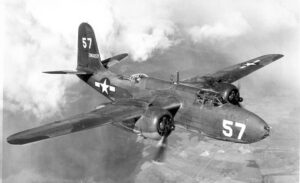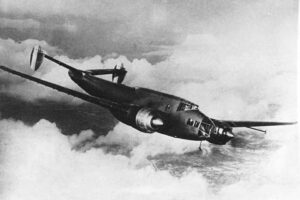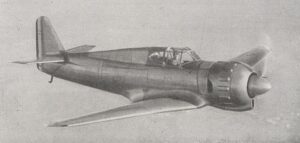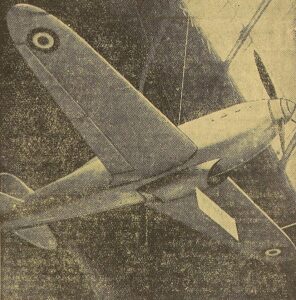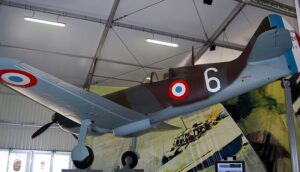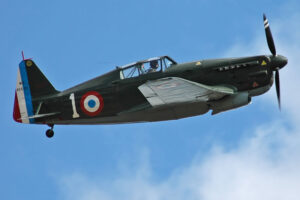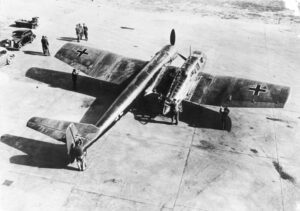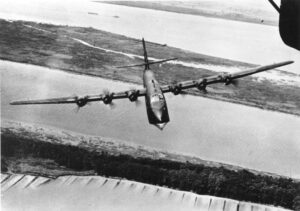Time Period: World War II
Country of Origin: United Kingdom
Type: Bomber Aircraft
Manufacturer: Avro Aircraft
Avro Lancaster Aircraft Overview
British heavy bombers from the Second World War included the Avro Lancaster. It was created and produced by Avro as a contemporaneous to the Handley Page Halifax and the Short Stirling, both four-engined heavy bombers used by the Royal Air Force (RAF) during the same period of World War II and developed to the same specifications.
The twin-engine Avro Manchester, which was created in the late 1930s in answer to the Air Ministry Specification P.13/36 for a medium bomber for “worldwide usage” that could carry a torpedo internally and conduct shallow dive-bombing operations, is where the Lancaster had its start. The Lancaster was designed by Roy Chadwick and powered by four Rolls-Royce Merlin and, in one form, Bristol Hercules engines. The Lancaster was first conceived as an upgrade of the Manchester (which had proven problematic in service and was decommissioned in 1942). It was originally used by the RAF Bomber Command in 1942, and when the strategic bombing campaign over Europe gained steam, it served as the primary aircraft for the next nighttime bombing operations.
The Avro Lancaster was modified in 1943 to serve as a Metropolitan-Vickers F.2 turbojet engine test bed. Later, various engines, such as the Avro Canada Orenda and STAL Dovern turbojets and the Armstrong Siddeley Mamba and Rolls-Royce Dart turboprops, were tested using Lancasters. After the war, the Avro Lincoln, a bigger version of the Lancaster, replaced the Lancaster as the primary strategic bomber of the RAF.
Avro Lancaster Specifications
- Crew: 7: pilot, flight engineer, navigator, bomb aimer/nose gunner, wireless operator, mid-upper and rear gunners
- Length: 69 ft 4 in (21.13 m)
- Wingspan: 102 ft 0 in (31.09 m)
- Height: 20 ft 6 in (6.25 m)
- Wing area: 1,297 sq ft (120.5 m2)
- Airfoil: root: NACA 23018; tip: NACA 23012
- Empty weight: 36,900 lb (16,738 kg)
- Gross weight: 55,000 lb (24,948 kg)
- Max takeoff weight: 68,000 lb (30,844 kg)
- Powerplant: 4 × Rolls-Royce Merlin XX V-12 liquid-cooled piston engines, 1,280 hp (950 kW) each
- Propellers: 3-bladed
Avro Lancaster Performance
- Maximum speed: 282 mph (454 km/h, 245 kn) at 63,000 lb (28,576 kg) and 13,000 ft (3,962 m) altitude
- Cruise speed: 200 mph (320 km/h, 170 kn)
- Range: 2,530 mi (4,070 km, 2,200 nmi)
- Service ceiling: 21,400 ft (6,500 m) at 63,000 lb (29,000 kg)
- Rate of climb: 720 ft/min (3.7 m/s) at 63,000 lb (29,000 kg) and 9,200 ft (2,800 m) altitude.
Avro Lancaster Armament
- Guns: Two 0.303-inch (7.7 mm) Browning Mark II machine guns in the nose turret, two 0.303-inch Browning Mark II machine guns in the upper turret, and four 0.303-inch Browning Mark II machine guns in the rear turret. (Early aircraft had two Brownings in a ventral turret aimed from within the aircraft via a periscope.)
- Bombs: Maximum normal bomb load of 14,000 lb (6,400 kg) of bombs



